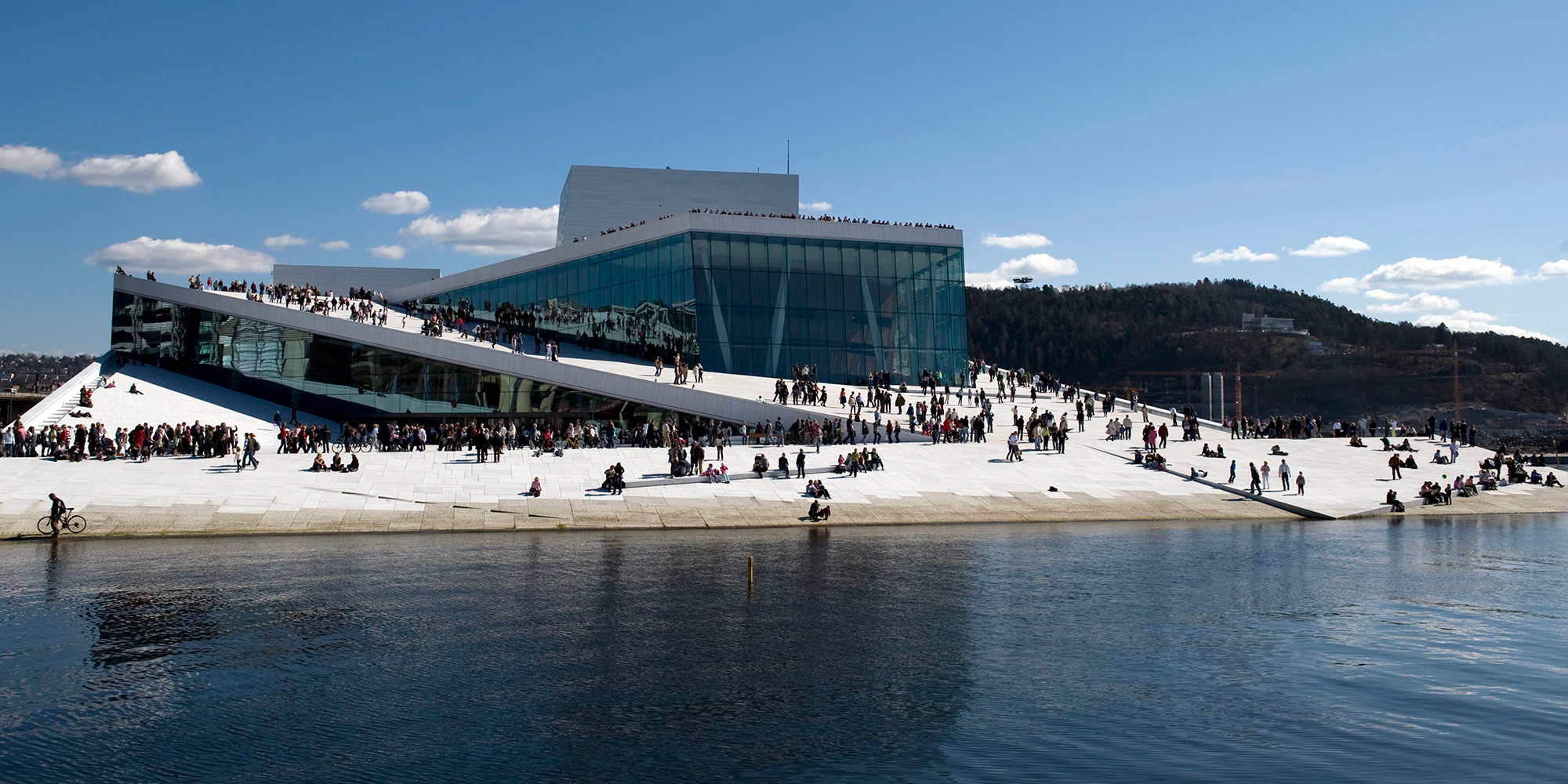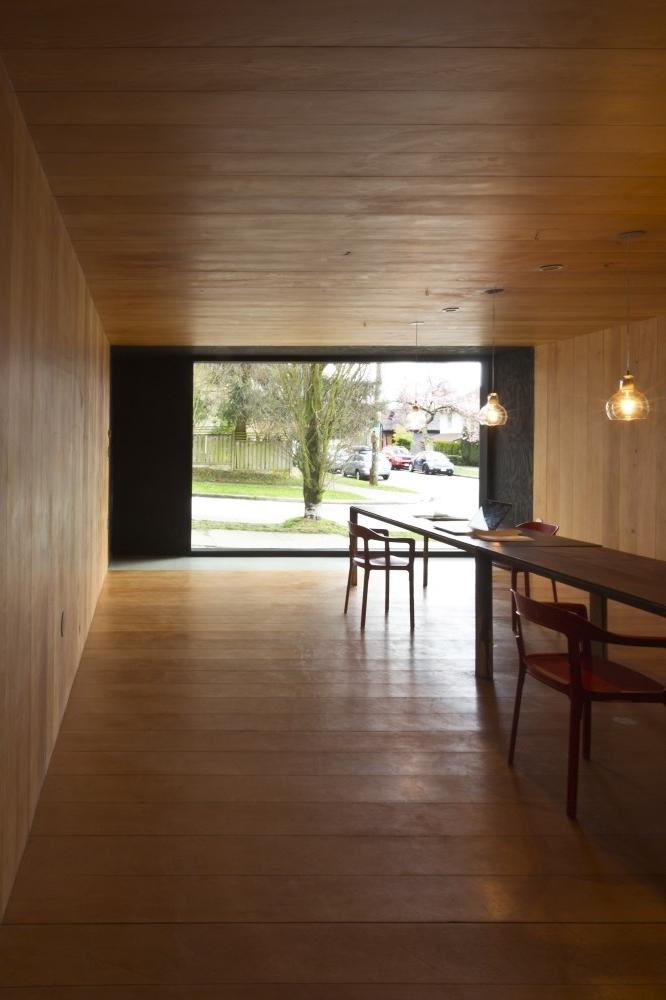

A dynamic skin with cool white color forms the outer character of the rooms while the interiors of the toilets themselves are heavier and mysterious.

The entrance to the bathrooms is seen from the coat room. The new Opera house faces the city as much as the fjord and creates a strong visual connection between the downtown and Oslo’s eastern areas. The Oslo opera house is built on piles in the Oslo fjord, abutting reclaimed land that extends Oslo’s harbor, giving more of the city’s waterfront space back to the public. Oslo’s Opera house is part of the city’s revitalization strategy to redevelop the city’s historically industrial waterfront into an active public space. The roof is designed to be accessible in all seasons, inviting visitors to climb its roof all year. In winter months, ice is often formed along the ramp and snowdrifts alter the form of the building. Care was taken with the design of these components so that they are seamlessly integrated into the overall character of the building’s bold design.

The cafes and gift shop, with their access to the waterfront, are destinations which offer opportunities to generate revenue for the institution while providing a general public amenity. The building still finds an audience with public who are not opera, ballet or orchestra fans.
#Oslo opera house windows
Generous windows at street level provide the public a glimpse of the scenery workshop activities. In the inaugural year, it won the culture award at the World Architecture Festival in Barcelona and the 2009 European Union Prize for Contemporary Architecture.The Oslo opera house building is as much landscape as architecture and thus fosters public awareness and engagement with arts. Thus, three are the main materials used by the studio to realize this contemporary building: stone, wood, and metal.

The building consists of 1,100 rooms, the biggest of which is the auditorium with 1,364 seats that has a horseshoe shape, illuminated by an oval chandelier containing 5,800 handmade crystals.Īll around the perimeter of the lobby we find 15m high windows with very thin frames and a special glass that guarantees a perfect view of the water, allowing the visitors to keep a connection with the outside surroundings. The stage tower is clad in white aluminum whereas the roof is supported by thin angled columns also designed not to interfere with the view. In contrast with the external coolness, both climate-wise and chromatic-wise (the white facade in marble and granite), the internal surfaces are covered in oak that brings “warmth” to the internal spaces. A mix on top of which people can walk since Snøhetta loyal to its mission created a roof titled towards the water (the roof creates a wide-angle when meeting the ground level) that could become a public space where people could walk and enjoy the view of Oslo…right on top of the Opera House. The external angular surfaces of the building are covered by a mix of Swedish white granite and white Carrara marble. This is the threshold where the public meets the art.” This is why the Oslo Opera House appears to be one with the shore, defining the line that divides the ground from the water as both a symbolic and real threshold: “This threshold is realized as a large wall on the line of the meeting between land and sea, Norway and the world, art and everyday life. Located at the head of the Oslofjord – precisely on the tip of the Bjørvika peninsula – and inaugurated in 2008 after 7 years of construction, the contemporary building was designed by Snøhetta: an architecture, landscape architecture, interior design and brand design office based in the Norwegian capital, a studio that defined the peninsula as an area “which is historically the meeting point with the rest of the world.” The studio is famous for its ethical philosophy, focusing its projects into the culture valorization of the countries where their projects are located and the respect for the surrounding landscape, thus projects that adapt themselves to the climate and the ecological system within which they are integrated. All around the world, the Oslo Opera House (in Norwegian Operahuset) is renowned for its shape that looks like is coming out of the water.


 0 kommentar(er)
0 kommentar(er)
